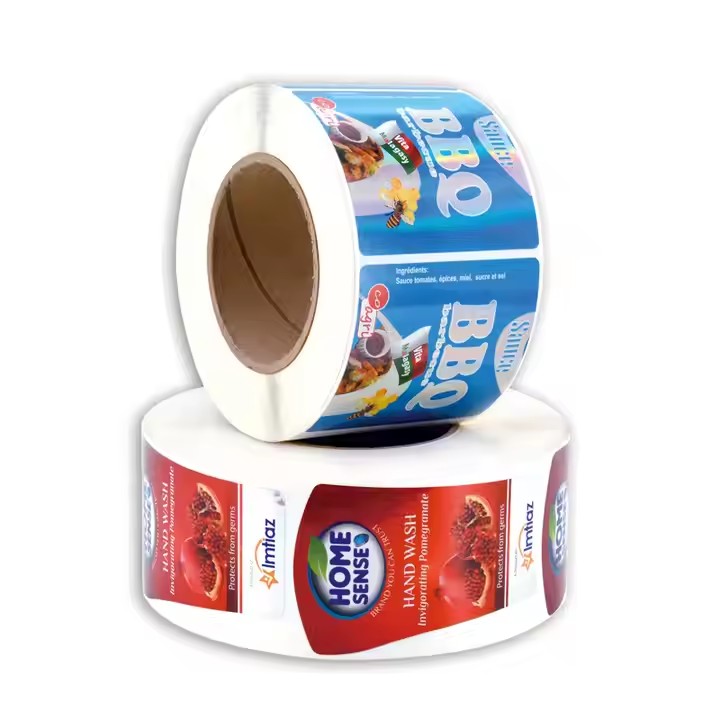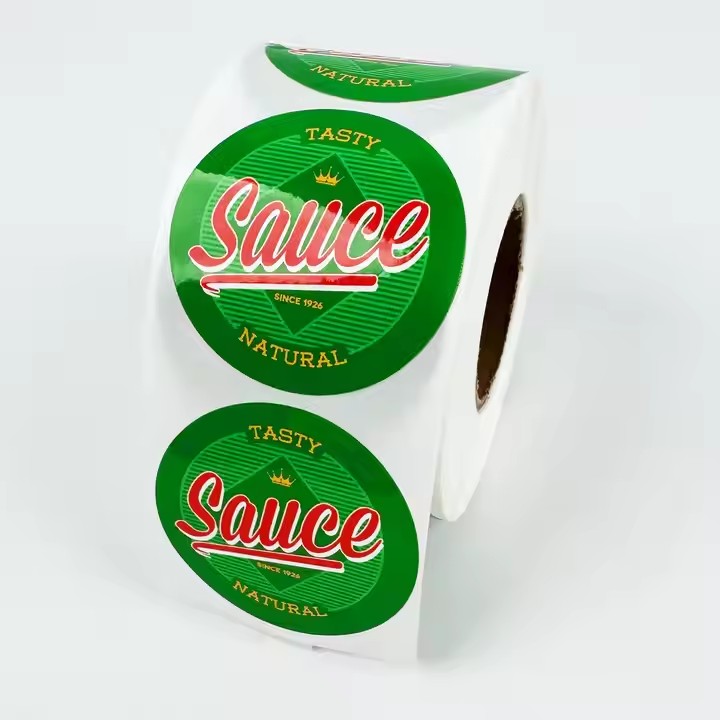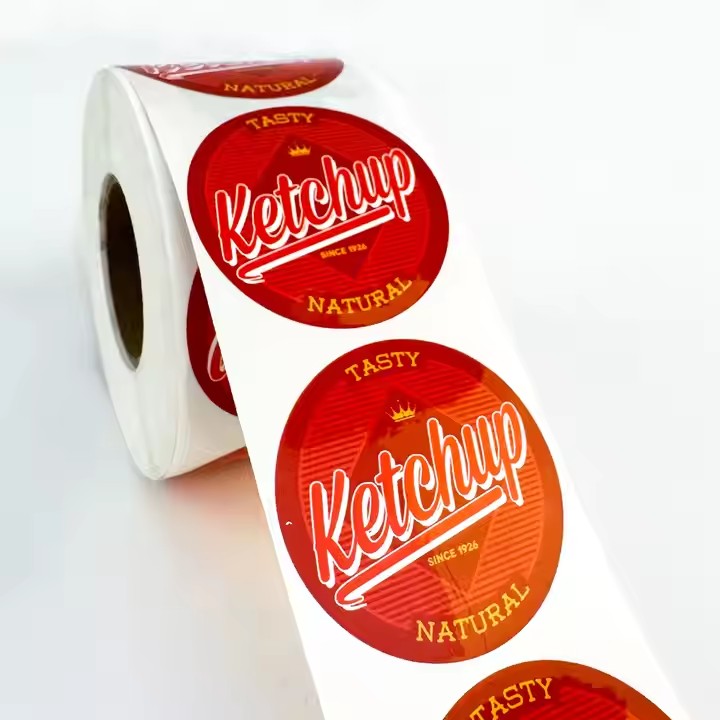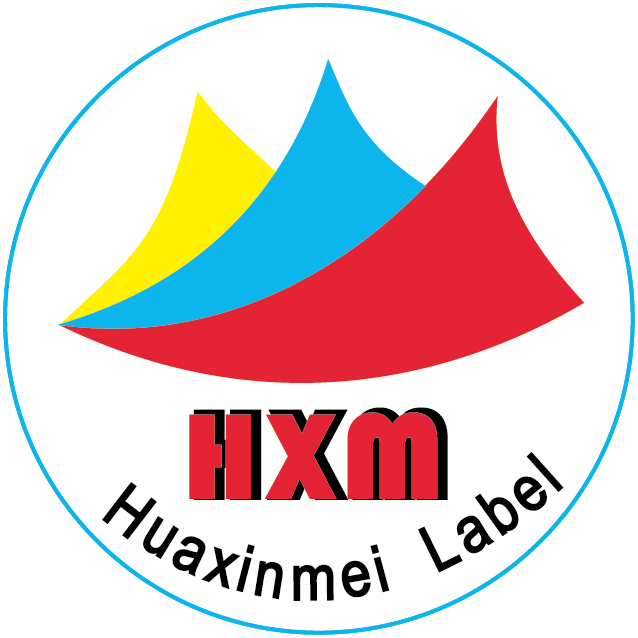I. Equipment Upgrade and Technology Introduction
- Purchase of Advanced Equipment
High-Precision Printing Equipment: For example, advanced digital printing machines can be adopted, like the Indigo series digital printing machines from Hewlett-Packard. They can achieve high-resolution printing with extremely high color reproduction. Their printing precision can reach thousands of dots per inch. Compared with traditional printing equipment, they can reproduce the tiny patterns and rich colors in label designs more accurately. Only with high-quality and advanced equipment can delicate labels be produced. We often see that some high-tech factories use equipment from Hewlett-Packard. With these world-class advanced equipment, the labels produced are of better quality.
Automated Processing Equipment: Introduce automated die-cutting machines, slitting machines and labeling machines, etc. For example, an automated die-cutting machine can precisely cut labels according to the preset shapes and sizes, and the error can be controlled within a very small range. Moreover, it has a fast processing speed and greatly improves the production efficiency.

Introduction of New Technologies
Nano Printing Technology: Nano printing is a new printing technology. It can spray smaller ink droplets, making the printed patterns more delicate. For example, when producing high-resolution anti-counterfeiting labels, nano printing can form microscopic anti-counterfeiting patterns on the labels. These patterns are hardly noticeable by the naked eye, but they can be clearly identified by professional equipment, effectively improving the anti-counterfeiting performance of the labels.
3D Printing Technology: For some labels that need to highlight a three-dimensional effect, such as brand labels of high-end products or creative product labels, 3D printing technology can make the labels have a realistic three-dimensional effect. It builds the three-dimensional structure of the labels by stacking materials layer by layer, which can add a unique visual experience to the labels.
II. Material Innovation and Optimization
- Selection of High-Performance Materials
Environmentally Friendly Materials: With the enhancement of global environmental awareness, biodegradable materials such as bio-based polyester and water-based glue can be selected to make labels. These materials can decompose relatively quickly in the natural environment after being discarded, reducing environmental pollution. For example, some food labels use edible rice paper materials, which are not only environmentally friendly but also will not cause harm to the human body even if accidentally eaten under special circumstances.
Functional Materials: For labels that require special properties, such as temperature-resistant labels and waterproof labels, high-performance materials are used. For example, for the labels on chemical product packaging that need to withstand high temperature and chemical corrosion, polyimide materials can be adopted. It has excellent high-temperature resistance and chemical resistance and can keep the integrity of label information in harsh environments.

Material Composite Technology
Multi-layer Composite Materials: Combine different functional materials together to meet the complex performance requirements of labels. For example, combine materials with good printing adaptability and high-barrier materials and use them for drug packaging labels. The outer layer materials can ensure the printing quality, so that the name, ingredients, usage instructions and other information of the drugs can be clearly and accurately printed out. The inner high-barrier materials can prevent the drugs from interacting with the external environment and extend the shelf life of the drugs.
III. Quality Control and Integration with Standards
- Establishment of a Complete Quality Management System
Total Quality Management (TQM): Adopt the TQM concept and conduct strict quality control over each link from raw material procurement, production process monitoring to finished product inspection. For example, in the stage of raw material procurement, conduct strict quality inspections on each batch of materials such as paper and ink, including physical property tests and chemical composition analyses, to ensure that only qualified materials can enter the production line.
Six Sigma Management: Use the Six Sigma method to reduce variations and defects in the production process. For example, in the label printing process, analyze the fluctuation of quality indicators such as color deviation and registration accuracy through statistical process control, find out the causes of variations, and take measures to improve, so that the quality of the labels is more stable.

Integration with International Standards
Familiarity with International Standards: Actively understand and study the standards for label production issued by international standard organizations (such as ISO), such as ISO 15416 (Automatic identification and data capture technology – Bar code printing quality test specification) and other relevant standards. Follow these standards to standardize the production process and quality inspection methods to make products meet the requirements of the international market.
Certification and Testing: Actively participate in international certifications, such as obtaining UL (Underwriters Laboratories) certification for labels of electronic equipment in specific fields. At the same time, regularly send products to authoritative third-party testing institutions for testing to ensure that the quality of the labels reaches or exceeds that of similar products at the international advanced level.
IV. Talent Cultivation and Cooperation and Exchange
- Professional Talent Cultivation
Internal Training: Regularly organize employees to participate in internal training courses, including knowledge in printing technology, materials science, equipment operation and maintenance, etc. For example, invite technical experts from equipment suppliers to the factory to conduct equipment operation training, so that employees can master the operation skills of advanced equipment proficiently and give full play to the performance advantages of the equipment.
External Further Education: Encourage employees to participate in external professional training, academic seminars and industry exhibitions, etc. For example, by participating in the International Label Printing Technology Seminar, employees can be exposed to the world’s cutting-edge label production technologies and concepts, broaden their horizons, and bring new technical ideas and market information back to the enterprise.

Industry Cooperation and Exchange
Cooperation with Suppliers: Strengthen cooperation with raw material suppliers and equipment suppliers and jointly develop new technologies and materials. For example, cooperate with ink suppliers to develop inks suitable for new printing equipment and special label requirements, so as to improve the printing quality and performance of the labels.
Industry Association Activities: Actively participate in the activities organized by the label industry association, communicate and cooperate with peer enterprises. Through technology sharing and experience exchange, jointly promote the progress of the label production process, understand the latest trends and development trends of the industry, and adjust the enterprise’s production strategies in a timely manner.


